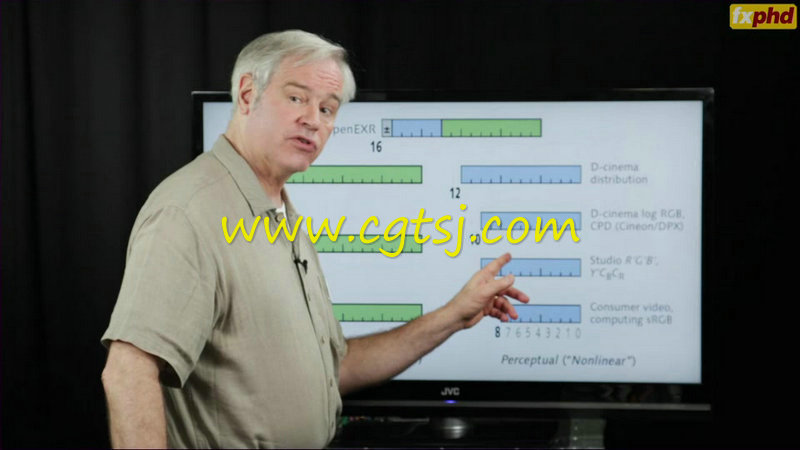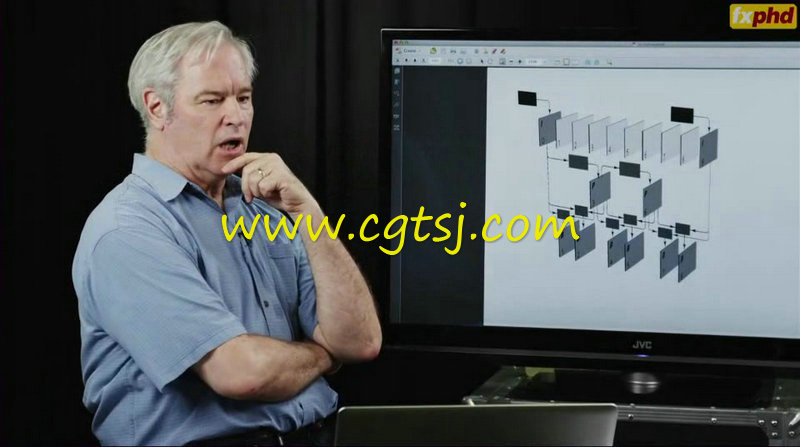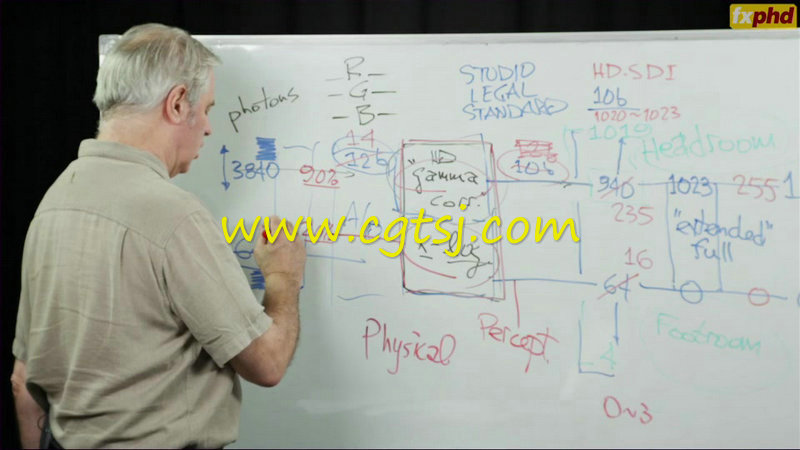本视频教程是由FXPHD机构出品的大师级数字色彩高阶理论视频教程,时长:6小时,大小:2.6 GB,MP4高清视频格式,附源文件,作者:Charles Poynton,共10个章节,语言:英语。
数字成像的核心是彩色图像编码,同时它也是高品质数字电影和高清视频的重要元素。本教程中,我们从摄像机前面的光谱形式开始学习,然后学习颜色减少到3个部分,然后学习后期制作,颜色分级,整理,审批,掌握,分配和展示或展览等步骤。我们也会学习这些步骤中的颜色变换和颜色空间以及二次抽样和压缩颜色。
课程中,讲师会为我们展示大量的图表,图形,和并数学方程式。学员最好了解y = mx + B方程式,并且了解矩阵,幂函数,和对数。
FXPHD机构是老牌在线教学网站,网站的创建者就是Fxguide的团队,FXPHD制作了大量视觉特效、后期制作、摄影摄像的精品教程。每年支付4000元左右,就可以享受其中5门课程的教学,还可以提供VPN链接内网,每套课程都是10周左右的时间,每节课30分钟左右,包含训练文件和素材。FXPHD主打专业教学,所有的教程作者都是该领域的权威,必须拥有大量的项目经验。
FXPHD DCT303 Advanced Digital Colour Theory
Colour image coding is at the heart of digital imaging; it is a critical element of high-quality digital cinema and HD production. In this course we follow colour from its spectral form in front of the camera into acquisition where colour is reduced to 3 components, then through the post-production, grading, finishing, approval, mastering, distribution, and display/exhibition stages. We discuss the colour transforms and colourspaces used at all of these stages. We discuss colour aspects of subsampling and compression (H.264, as in Canon cameras, ProRes, as in Alexa, and JPEG2000, as used in DCPs).
We’ll present lots of diagrams, graphs, and equations using math at intermediate level; we hope that you’re quite familiar with y = mx + B, and somewhat familiar with matrices, power functions, and logarithms. (WARNING: The presenter is Canadian; colour will be spelled with a “u”.)
Class 1: Technical introduction to colour science: We introduce the spectral power distributions of physics using Newton’s drawing from the year 1666. We introduce the CIE standard observer, and the tristimulus values (“tristimuli”) that result from applying those weighting functions to SPDs. We derive RGB values, and demonstrate RGB colour mixtures. We review the CMY coding of motion picture film, and review the densitometric coding of classic CPD/DPX systems.
Class 2: Perceptually uniform coding: We define the concept of linearity, and explain why it is important in modern imaging systems. We define lightness. We introduce power functions and logarithms. We discuss the code-100 problem. We ask, what bit depth is necessary to represent reality? What bit depth is required to satisfy human vision?
Class 3: Lin, log, and quasilog coding: There are two kinds of “linear” acquisition and two kinds of “log” acquisition; we elaborate. We outline various proprietary log formats. We discuss theoretical and practical aspects of acquisition coding.
Class 4: Colour transforms: There are many kinds of colour transforms: affine transforms (3×3 linear matrix, in LMS, XYZ, RGB colourspaces, and also in Y’CBCR spaces), projective transforms transforms (used in CIE xy), and various nonlinear transforms (including CIE LAB). We discuss 3D LUTs, gamut mapping, and ICC colour management systems.
Class 5: The ACES workflow, colourspaces, and transforms: Scene-referred linear-light image coding is fast becoming the standard way to do high-end production. We describe the ACES and OCES colourspaces, and the ACES colour transforms: IDT, LMT, RRT, RDT, and ODT.
Class 6: We explain the theoretical and practical necessity of a camera 3×3 matrix. We describe how to build a transform from real camera RGB (device space) to the ACES interchange colourspace – that is, we explain how to build an ACES input device transform, IDT. We also discuss why IDTs have illumination dependencies.
Class 7: Video colour coding: We present a systematic overview of gamma, including the DCI standard for digital cinema (2.6), the BT.1886 standard for HD (2.4) and the sRGB standard for desktop computing (2.2). We review chroma subsampling (4:4:4, 4:2:2, 4:2:0), and discuss its effects on noise, resolution, and bit depth.
Class 8: Distribution: We describe in detail the DCI P3 image coding used for reference D-cinema projectors, and the XYZ coding for DCPs. We outline compression issues associated with ProRes, H.264, and JPEG2000.
Class 9: HD, 2K, 4K (“UHD”), 8K: We detail current and future image formats, and we discuss the underlying theory of spatial sampling, resampling, and oversampling.
Class 10: Emergent display systems: Wide gamut colour is emerging rapidly. We discuss LED backlights on LCD displays; OLED displays; laser displays; spatially modulated backlights and high dynamic range displays. We also discuss the open issue of observer metamerism in emergent displays.



